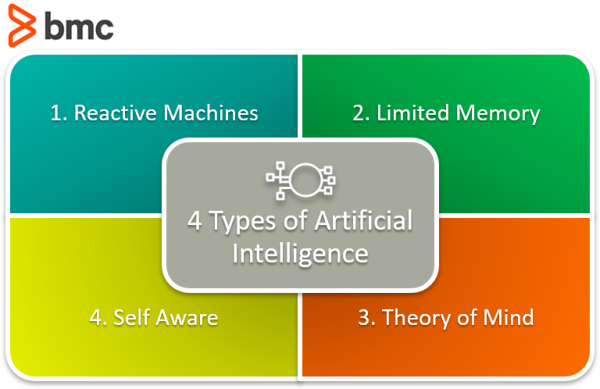3. Four Types of AI (Diego) - Lucia922/IT115-WiKi GitHub Wiki
Four Types of AI:
Arend Hintze, an assistant professor of integrative biology and computer science and engineering at Michigan State University, explained in a 2016 article that AI can be categorized into four types, beginning with the task-specific intelligent systems in wide use today and progressing to sentient systems, which do not yet exist. The categories are as follows:
- Reactive machines: These AI systems have no memory and are task-specific. An example is Deep Blue, the IBM chess program that beat Garry Kasparov in the 1990s. Deep Blue can identify pieces on the chessboard and make predictions, but because it has no memory, it cannot use past experiences to inform future ones.
- Limited memory: These AI systems have memory, so they can use past experiences to inform future decisions. Some of the decision-making functions in self-driving cars are designed this way.
- Theory of mind: Theory of mind is a psychological term. When applied to AI, it means that the system would have the social intelligence to understand emotions. This type of AI will be able to infer human intentions and predict behavior, a necessary skill for AI systems to become integral members of human teams.
- Self-awareness: In this category, AI systems have a sense of self, which gives them consciousness. Machines with self-awareness understand their own current state. This type of AI does not yet exist.

We are currently perfecting the second type of AI known as Limited memory. The third and fourth types only exist in theory because there are no machines with that power. Actually, some believe we have hit a wall regarding AI development because it is expected to take a long time before theory of mind becomes an actual thing.
The next two stages of AI will change the world forever because machines will be more intelligent than men. In the distant future, computers will be able to comprehend human feelings and reasoning, but most importantly computers will be self-aware.
